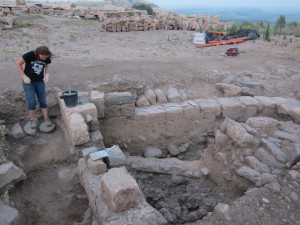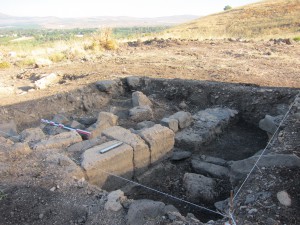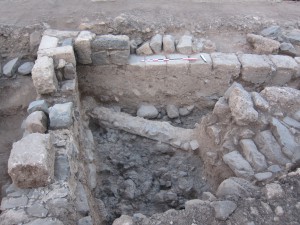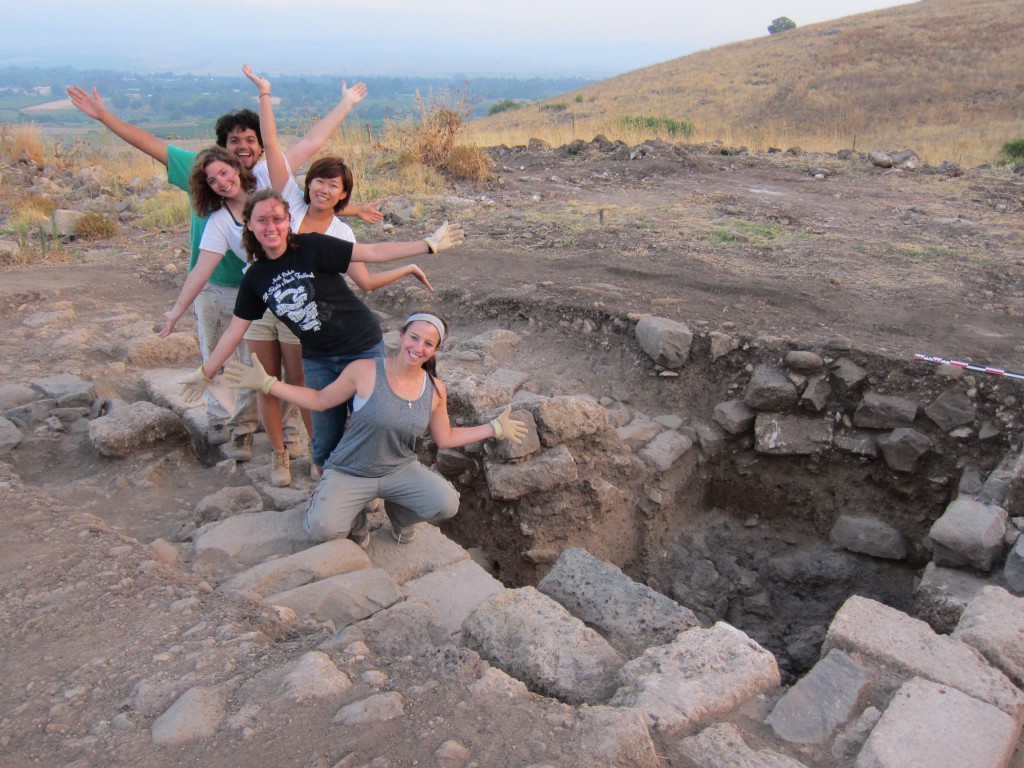It’s really difficult to believe that we touched down at Tel Aviv airport three and a half weeks ago, and that yesterday was already our last day in the field. Our experience was fully immersive; we have spent every day breathing, touching, sorting, and absorbing history. Every square has been exciting and also puzzling in its own way. Like Elvira, I’m departing with more questions than answers, more knowledge but less surety, and hopefully, more toned arms than before.
We started digging our square by joining two previous squares that were worked on in the 2010 season. It showed promised because of a large mortared wall and an adjoining one made of Roman spolia. We suspected that it was a Byzantine structure that made use of earlier building material, and that its size might indicate a section of a potentially sizable building.
As we dug down, it became clear that our walls were indeed part of some significant structure. The east and the south sides were plastered, and the wall extended along the west side of the square. The three sides make up a trapezoidal shape, which along with the plaster, leads us to think that it was used as an interior space. Finds like glass, marble revetment, a coin, brick, tessera, and cement all point to an important building, although we’re very far from being able to guess what it was. What period did this building date from? What was it used for, and who used it? Was it a sacred, commercial, or domestic space? Did it have any relation to the temple nearby? We were scratching our heads when we came across what looked like a large cement floor covering about half of the pit. After working carefully around it and taking out dirt where we could, our most exciting find was fully revealed: a well-preserved pipe covered in cement, which lay beneath a section of cobbled floor in the southeast corner of the pit. Here are the photos from the final day:

a clear view of the pipe, still in its original encasing. amy berg is cleaning for the final photo shoot
The orientation of the pipe seems to align with a spring uphill from the temple, and gives hope to the hypothesis of a bath complex nearby. This, however, is just speculation until excavators in future seasons find the answers to all of our wonderings. One of the most salient lessons I’ll take away with me is the that fact that archaeology is hard work and requires a far-reaching perspective. We were only able to accomplish what we did after augmenting the work of countless volunteers and scholars before us, and our work can only be completed and perfected by future archaeologists-to-be. Thanks for reading!



